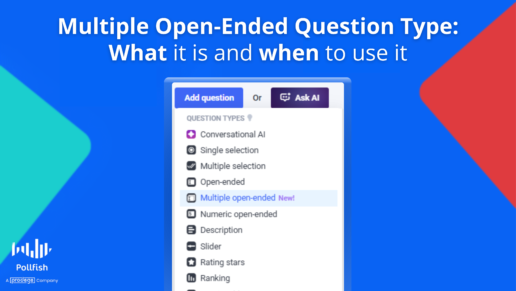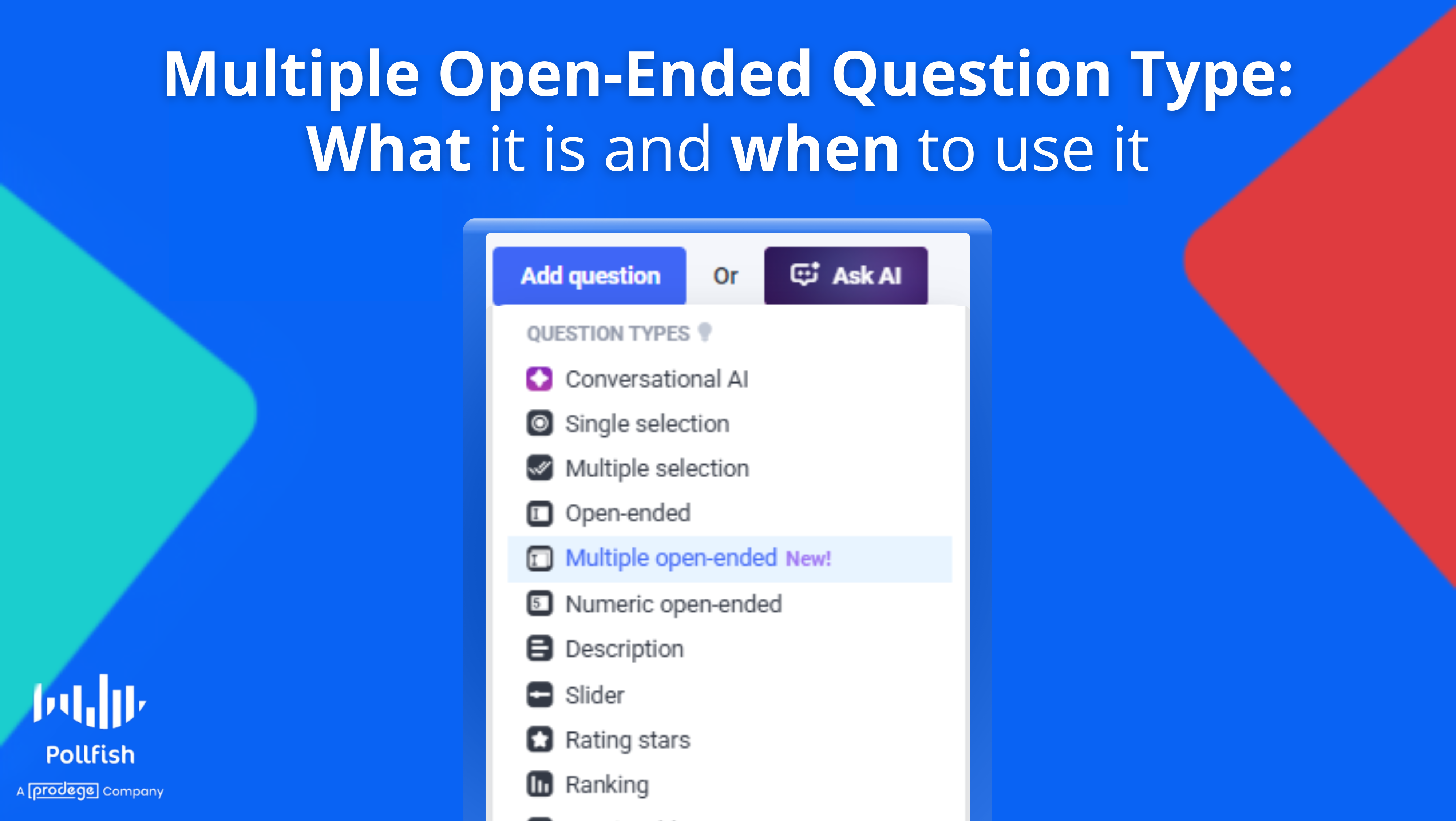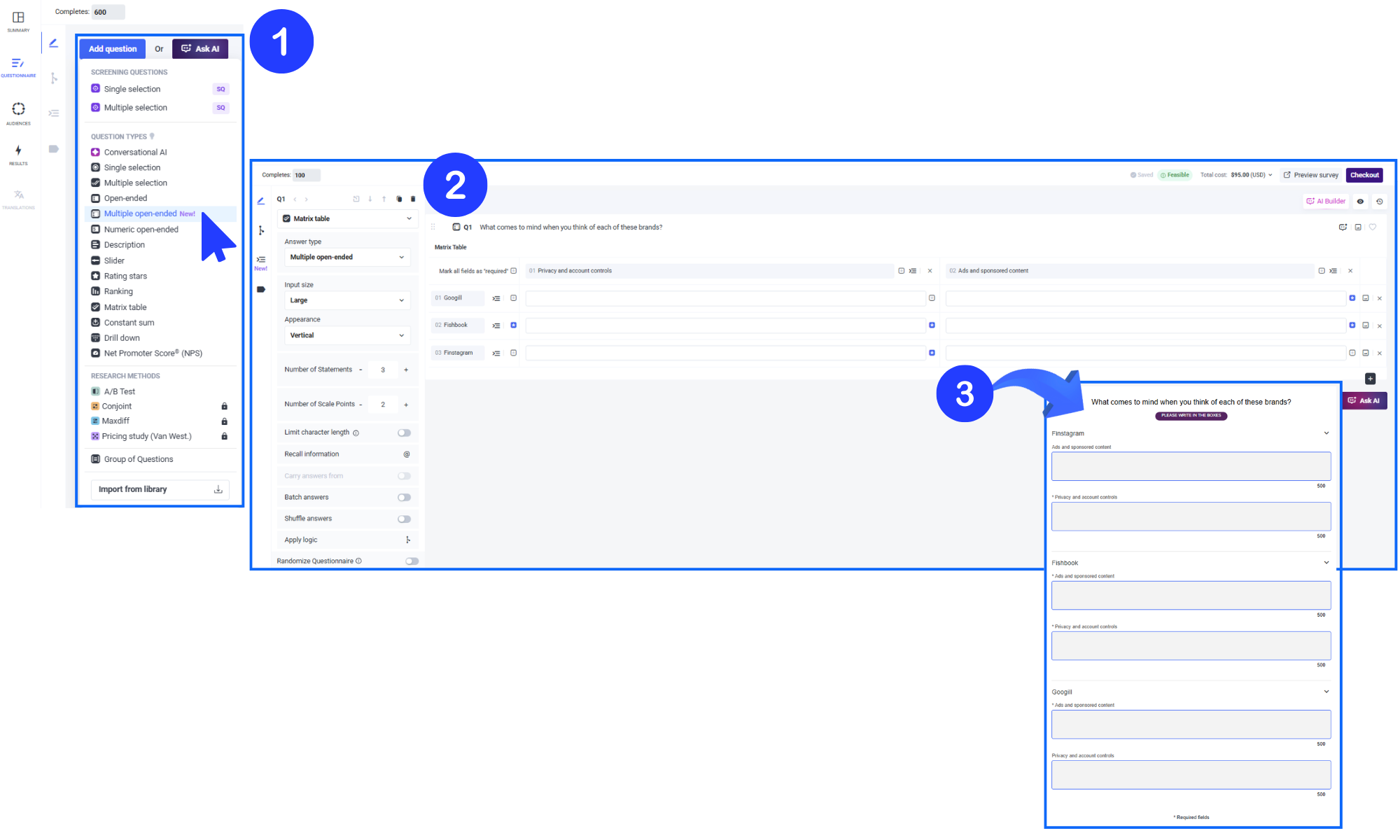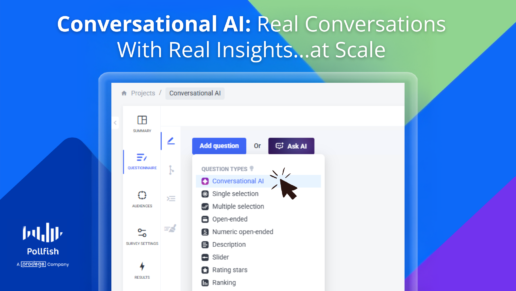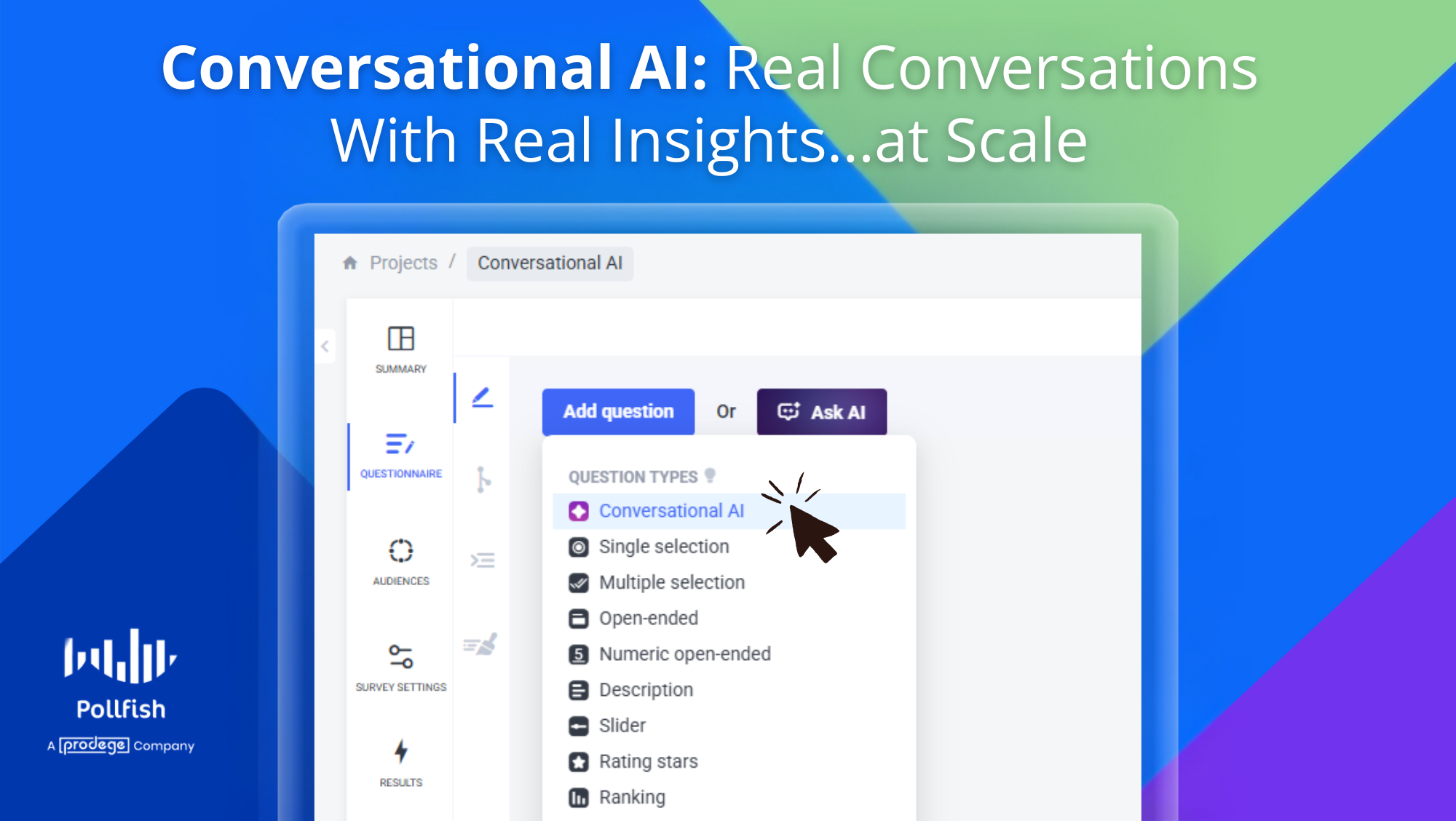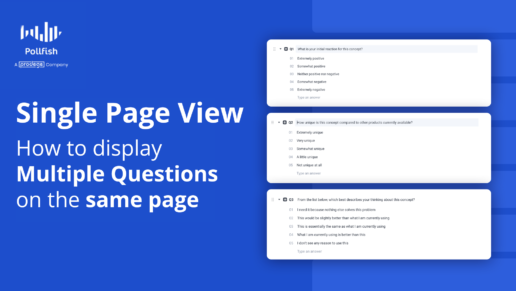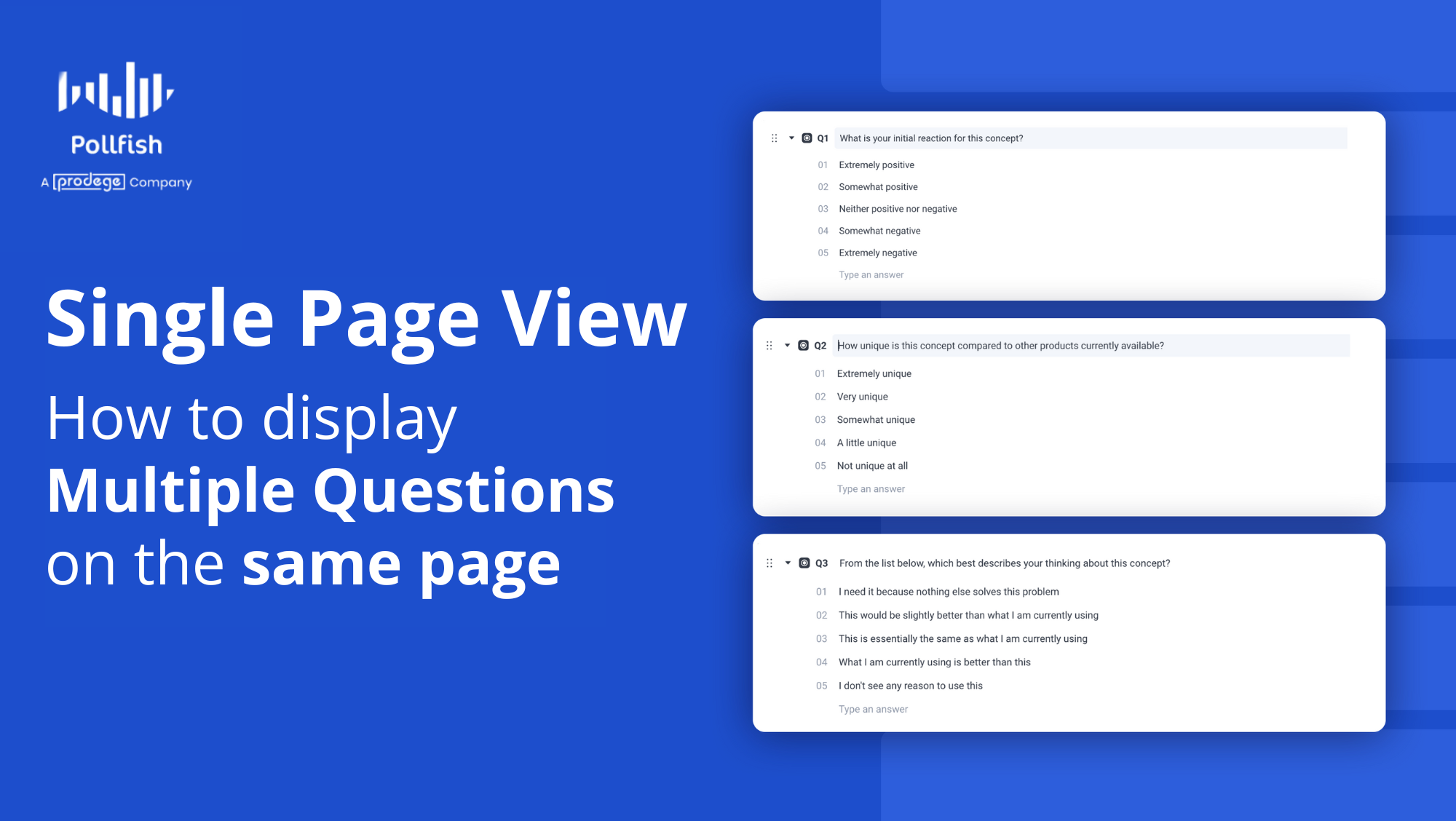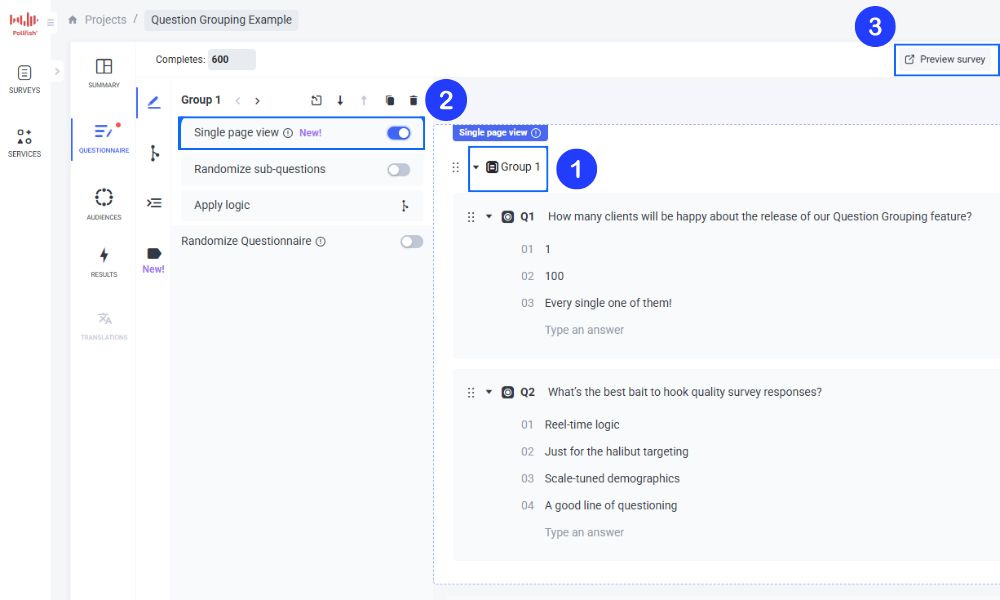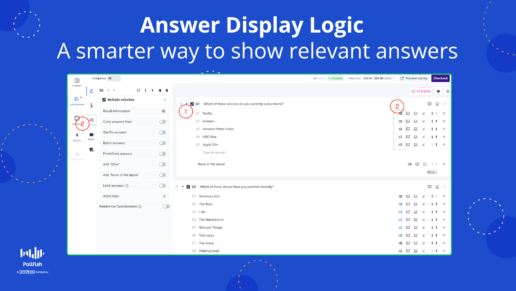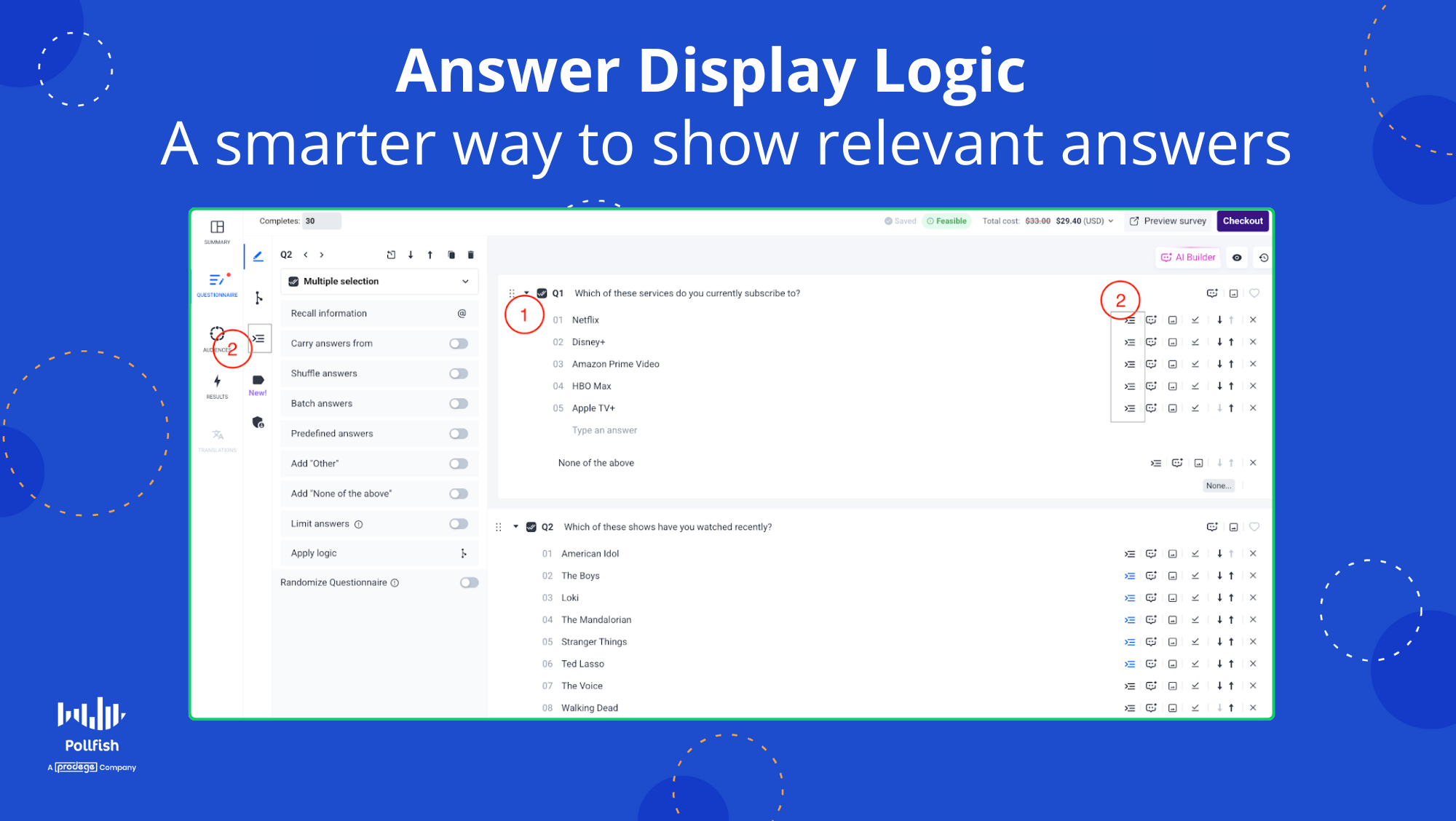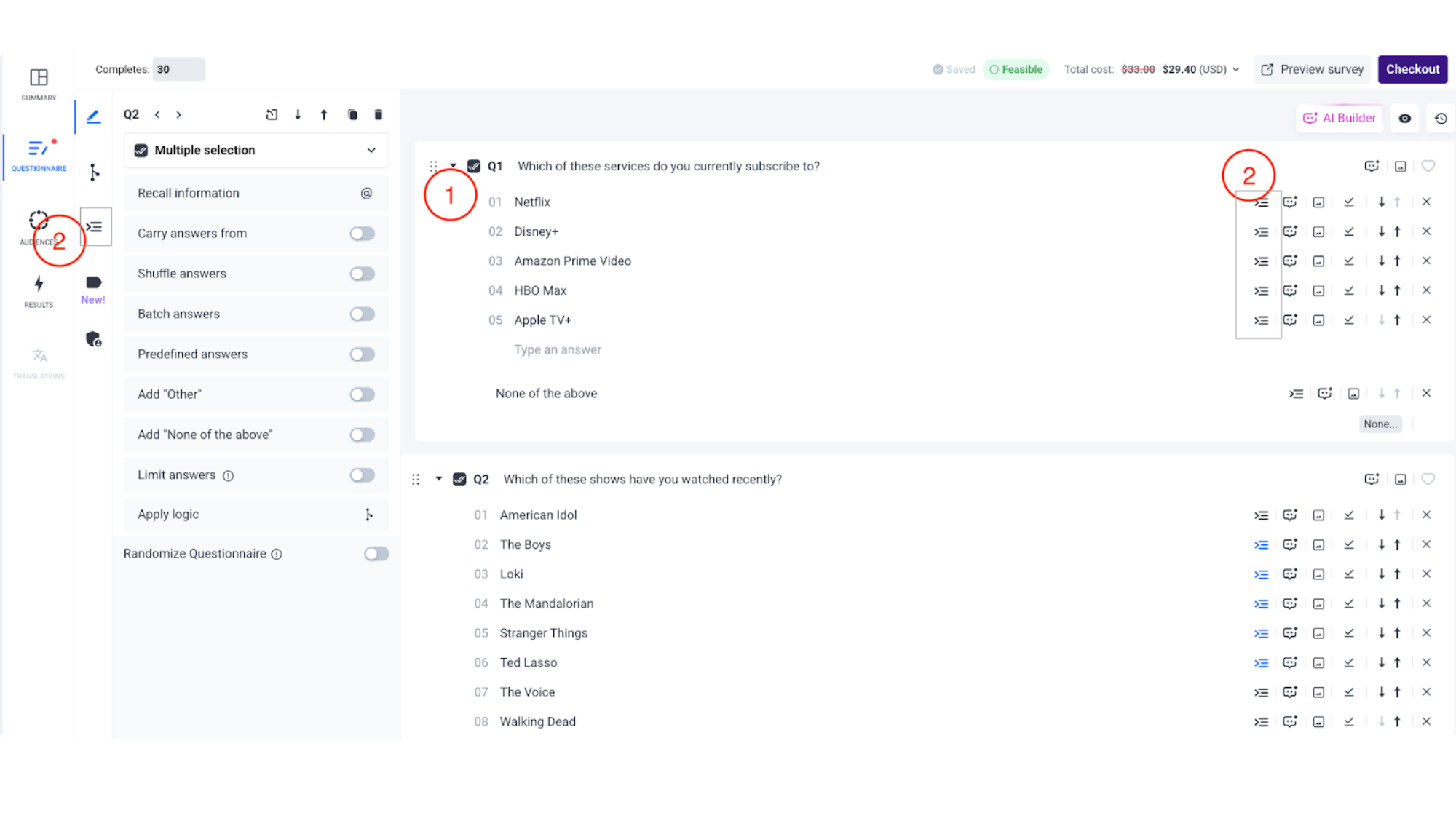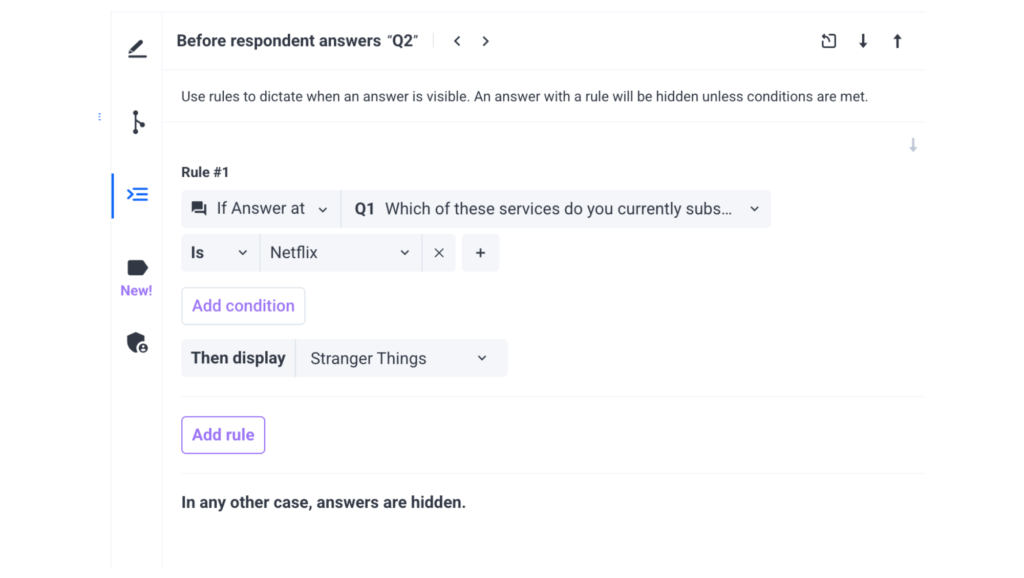Multiple Open-Ended Question Type
Ask richer questions. Get deeper answers.
We’ve just launched the brand new Multiple Open-Ended question type on Pollfish - giving you more power to collect unstructured insights in a structured way.
Think of it as a matrix-style question, but instead of asking for ratings or numbers, you’re giving respondents the space to write out their thoughts. This makes it perfect for branding questions, concept feedback, and anything that benefits from qualitative input - all while keeping responses neatly organized.
What is a Multiple Open-Ended question?
It’s a flexible matrix question where each cell is an open text field, not a number or scale. You set a main question, define statements (rows), and optionally scale points (columns) - and your respondents can type a response for each cell.
Why use it?
Let’s say you're a brand marketer and want to ask:
“What are your favorite cereal brands?”
Rather than just one long open-end field, you can break it down into 3 or more shorter fields. Or go deeper:
“Where do you like to shop?”
For Shoes: (3x open ends)
For clothing: (3x open ends)
etc
It’s structured and open. So you get specific feedback that’s easier to compare, without losing the nuance of free-text responses.
Key Features
Scale point labels are optional – Use them if you want column headers, skip them if not.
Statement labels required only when there’s more than one – Keep it clean and simple when needed.
Input field sizes – Choose from Small, Medium, or Large to match your question intent.
Orientation control – Display fields vertically or horizontally depending on layout preference.
Character limits – Set a min/max (2–500 characters) for each input field independently.
Matrix logic compatibility – Use carry forward, batch input, and answer shuffling just like with other matrix types.
When to use Multiple Open-Ends
We had clients ask us to develop this feature for use cases such as...
Brand recall: “What brands come to mind for each of these categories?”
Product feedback: “Tell us what you liked or disliked about each feature.”
Shopping habits: “List your go-to stores for each item below.”
Creative testing: “How would you describe each concept in one sentence?”
Ready to try it?
You’ll find Multiple Open-Ended questions under the question types button when you add a question to your next survey. Customize it to match your research needs and start gathering richer, more insightful feedback today.
Got questions? Drop us a line on the live chat or explore more how-tos at Pollfish School.
Conversational AI: How to Hold Real Conversations With Real Insights, at Scale
Surveys don’t have to feel like, well…surveys.
With Conversational AI, we’re bringing a whole new level of engagement to Pollfish. This powerful new question type allows you to have real-time, one-on-one conversations with respondents, powered by AI and delivered at scale.
It’s more than just a new format. It’s a smarter way to uncover the why behind consumer behavior.
What is Conversational AI?
Conversational AI is a survey question type that engages respondents in a dynamic, AI-led chat experience - just like chatting with a real person.
Unlike traditional open-ends or multiple choice questions, Conversational AI encourages richer, more thoughtful responses by replicating the feel of a real conversation. And because it’s backed by AI, it can happen in real-time with thousands of people at once.
Whether you want to go deep on a single topic or weave this format into your broader survey, Conversational AI fits seamlessly into your project. Use it as a standalone study, or mix and match with other Pollfish question types within your survey.
Why use Conversational AI?
This question type combines the best of qualitative and quantitative research in one experience. Here’s what makes it a game-changer:
✅ Real Conversations: Engage with the Pollfish Audiencel for natural, back-and-forth chats that surface tone, emotion, and nuance faster than traditional qual.
✅ Deeper, More Authentic Insights: Dynamic prompts help respondents open up, yielding more thoughtful responses.
✅ Fast, Actionable Summaries: No need to comb through raw text. We'll instantly synthesize key themes and takeaways into a clear, executive-ready summary.
✅ Flexible by Design: Use Conversational AI as part of a mixed-methods survey or as a focused deep-dive. DIY it, or get support from our expert research team.
✅ Cost-Effective: Get the depth of interviews without the heavy lifting. No scheduling, no transcription, no moderators required.
Great for Questions Like...
Whether you're testing early-stage creative or measuring emotional reactions, Conversational AI shines when tone and depth matter most.
Use it for:
Brand sentiment or perception
Post-experience feedback
Concept or creative testing
Exploring motivations, habits, or attitudes
Any question where “why” matters more than “what”
How It Works
- Create a Guide: Start by writing a short discussion guide or key goals for your question - Conversational AI uses this to lead the conversation.
- Launch the Survey: Pollfish connects your survey to your target audience, gather qualitative feedback from hundreds (or thousands) of respondents quickly and asynchronously.
- Get Smart Summaries: When the data’s in, we compile the key themes and insights so you can act fast. On a respondent level and at a project level. There's no manual analysis required.
Want step-by-step instructions in setting up a Conversational AI question? Check out our Conversational AI Help Guide →
Ready to Start a Conversation?
You’ll find Conversational AI in the questionnaire menu when building your next survey. Create a new project → Select your audience → Add question → Select Conversational AI
Need help getting started or want to brainstorm how to use it in your research? Our team’s standing by 24/7. Use the live chat to connect with our support team anytime. Our experts can assist you with your setup.
You can also book a session directly from the chat for a live demo or personalized guidance.
Build your first Conversational AI survey now →
Using Single Page View to Display Multiple Questions on the Same Page
Single Page View - For Natural Topic Grouping
By default, Pollfish shows one question per page to your respondents.
But there are times when you might want to show multiple questions together in a group, say for shorter surveys or when you want respondents to answer questions in context around a topic. If that's what brought you here, then you're looking for our Single Page View feature.
Where to Find Single Page View
Once you've loged in to your Pollfish account and created a project, or navigated to your existing survey draft...
From the Add Questions menu button, add your questions to a question group
In the group settings, toggle "Single Page View" to ON
Once enabled, the selected questions within that group will appear on the same page to respondents, and can be viewed using the Preview Survey button (in the top right of your screen)
Example Use Cases
Customers asked us for the functionality to show multiple questions on the same page for a variety of reasons. Here's just a few requests, to give you inspiration:
Customer Satisfaction Surveys: "I'd like to group multiple related CSAT questions to minimize clicks and respondent fatigue"
Product Feedback: "We'd like to ask questions about features, usability, and expectations all in one view"
Behavioral Research: "By asking similar topic questions on a single page, we'd reduce cognitive interruption between questions by grouping them logically"
Need Help?
We’re here for you! Use the live chat to connect with our support team 24/7. Our experts can walk you through question grouping and the Single Page View feature to help with your setup.
You can also book a session directly from the chat for a live demo or personalized guidance.
Answer Display Logic
A Smarter Way to Show Relevant Answers
Pollfish now gives you more control over your survey flow with Answer Display Logic, a powerful feature available directly within the Questionnaire Builder. This enhancement allows you to dynamically tailor answer options based on a respondent's previous inputs—making your surveys more personalized, relevant, and efficient.
What is Answer Display Logic?
Answer Display Logic enables you to show specific answer choices only when certain conditions are met. This means you can tailor questions to the unique experiences or characteristics of each respondent, enhancing clarity and avoiding irrelevant options.
For example: If a respondent says they subscribe to Netflix in an earlier question, you can set up logic so that only "Stranger Things" appears in a follow-up question asking what shows they’ve watched recently. Respondents who did not select Netflix won’t see that option.
How to Set Answer Display Logic
Follow these steps to conditionally display an answer based on prior behavior:
- Log in and create or open your draft survey
- Select the question where you want answers to be shown conditionally.
- Click the "Edit Answers Display Logic" tab on the left-hand side (just below the "Edit Advanced Logic" section) OR click on the Answers Display Logic icon next to the specific answer you want to conditionally display.
- Set the conditions that must be met—these can be based on:
- Answers to previous questions
- Hidden variable labels
- Targeting parameters (from your audience setup)
- Answers to previous questions
- Answers with display logic will remain hidden unless the defined conditions are met.
- You can use one rule to show or hide one or more answer options within a question.
- That’s it! You’re all set to deliver a tailored, intelligent survey experience.
Compatible Question Types and Features
Answer Display Logic is currently supported on the following question types:
- Single Selection
- Multiple Selection
- Ranking
- Matrix (rows/columns, bipolar statements only)
Other features supported:
- Display logic on [Other] and [None of the Above] options
Works with "Shuffle answers" feature
Limitations and Incompatible Features
To help you avoid errors, it’s important to know what Answer Display Logic does not currently support:
- Only one rule can be applied to each answer option, but that rule can contain multiple conditions using AND/OR logic.
- Not compatible with the following question types:
- Slider
- Open-ended (including Numeric Open Ended)
- NPS
- Description
- Rating Stars
- Drill Down
- All Research methods (e.g. Conjoint, A/B Testing)
- Slider
- If a question also has Skip Logic, ‘’Answers Display Logic’’ rules will be evaluated first, followed by Skip Logic.
- Each question must include at least one answer that's always visible to all respondents—meaning it’s not carried forward and has no display logic applied. This ensures there's never a case where all options are hidden.
- Question shuffling (also referred to as ‘’Randomize Questionnaire’’) and Answer Display Logic cannot be used together.
Editing and Removing Answer Display Logic
Once your survey is live, you can still edit or remove Answer Display Logic rules (‘’Edit Survey’’ option) for any remaining responses.
Additional ADL Issues & Error Handling
Pollfish will flag any logic issues automatically, such as:
- Setting conditions based on a question the respondent hasn’t yet answered
However, if you create Answer Display Logig rules based on a question that may be skipped due to Skip Logic, some respondents may never encounter the conditional answer option. It's important to carefully review your survey flow to ensure all intended respondents have access to the relevant questions and answers.
Need Help?
We’re here for you! Use the live chat to connect with our support team 24/7. Our experts can walk you through the Answer Display Logic feature and help with setup.
You can also book a session directly from the chat for a live demo or personalized guidance.
All NEW Pollfish AI Builder: The Smarter Way to Create Surveys
💡 Revolutionizing Survey Creation with AI
At Pollfish, we’re always looking for ways to make survey creation faster, easier, and smarter.
That’s why we’re thrilled to introduce a cutting-edge revamp to AI Builder, our next-generation AI-powered survey creation tool.
It’s free to use for all of our customers. So whether you’re a seasoned researcher or just getting started, our new AI Builder can help you craft high-quality surveys with expert precision and minimal effort.
What is AI Builder?
Taking pride of place at the top of your survey dashboard, AI Builder is our conversational tool that enhances your survey creation process by offering real-time suggestions, modifications, and optimizations to your projects. With AI Builder, you can:
- Generate professional-quality surveys from a simple prompt.
- Modify, rephrase, or expand questions with expert survey guidance.
- Change the tone, spell check and translate your survey for different audiences.
- Adjust response options by adding, removing, or shuffling answers.
- Undo previous AI modifications for full control over your questionnaire.
Supporting Advanced Research Methods
AI Builder isn’t just about creating questions – it’s designed to support a variety of research methodologies, including:
Plus, it supports a wide range of question types, from single and multiple selections to matrix, ranking, sliders, open-ended responses, and more.
What’s Next for AI Builder?
We’re just getting started! Our dedicated team of Pollfish AI developers are continuously iterating the product to lead AI in the market research industry. So you’ll see it’s speed and capabilities increase quickly over time.
Upcoming enhancements include:
- Question Groups – Create structured sets of questions for deeper insights.
- Advanced Logic – Set up complex branching to refine survey flow.
What functionality would you like to see? Let us know over on Linkedin and we’ll feed it straight back to the team…
Try AI Builder Today
Our all new AI Builder is now live in the Pollfish platform! The next time you log in to your dashboard or create a survey, look for the “Ask AI” button to start building smarter, faster, and with greater precision than ever before.
And of course we’d love to hear your feedback…
How are you using AI Builder?
What additional features would make it even more powerful for your research needs?
Share your thoughts in the comments and help shape the future of AI-powered survey creation, together.
Ready to experience the future of survey creation?

